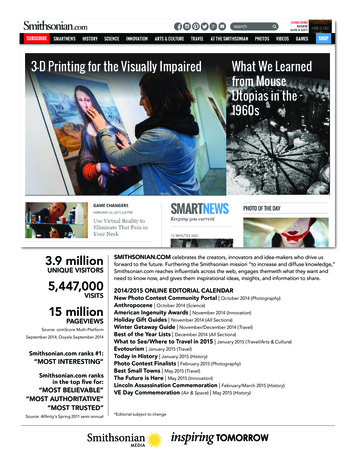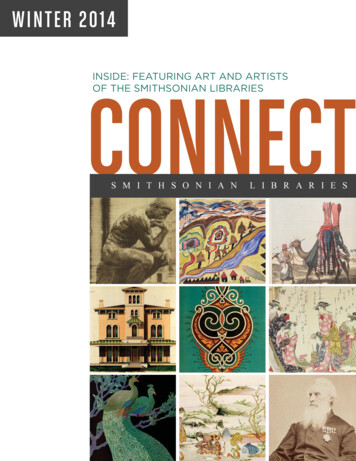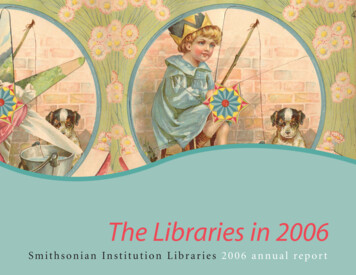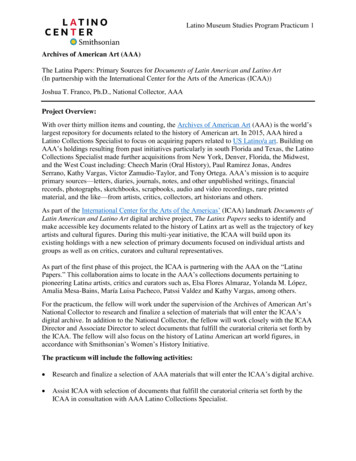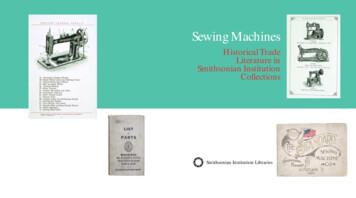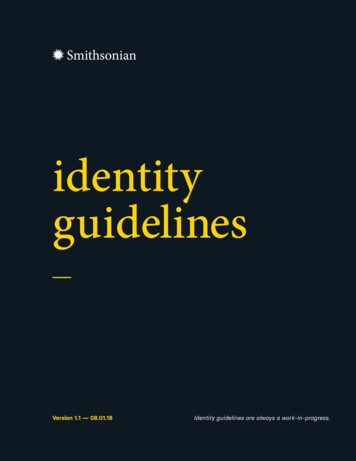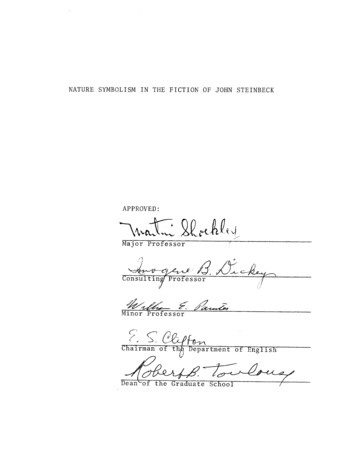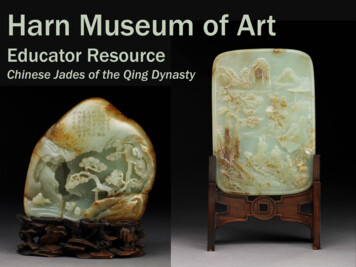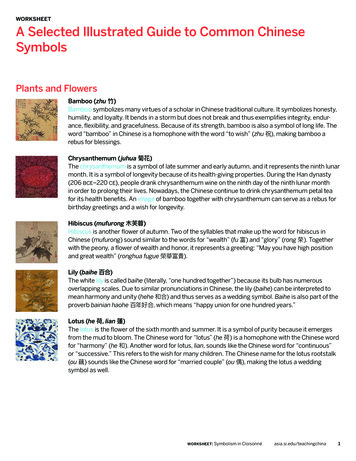
Transcription
WorksheetA Selected Illustrated Guide to Common ChineseSymbolsPlants and FlowersBamboo (zhu 竹)Bamboo symbolizes many virtues of a scholar in Chinese traditional culture. It symbolizes honesty,humility, and loyalty. It bends in a storm but does not break and thus exemplifies integrity, endurance, flexibility, and gracefulness. Because of its strength, bamboo is also a symbol of long life. Theword “bamboo” in Chinese is a homophone with the word “to wish” (zhu 祝), making bamboo arebus for blessings.Chrysanthemum (juhua 菊花)The chrysanthemum is a symbol of late summer and early autumn, and it represents the ninth lunarmonth. It is a symbol of longevity because of its health-giving properties. During the Han dynasty(206 BCE–220 CE), people drank chrysanthemum wine on the ninth day of the ninth lunar monthin order to prolong their lives. Nowadays, the Chinese continue to drink chrysanthemum petal teafor its health benefits. An image of bamboo together with chrysanthemum can serve as a rebus forbirthday greetings and a wish for longevity.Hibiscus (mufurong 木芙蓉)Hibiscus is another flower of autumn. Two of the syllables that make up the word for hibiscus inChinese (mufurong) sound similar to the words for “wealth” (fu 富) and “glory” (rong 荣). Togetherwith the peony, a flower of wealth and honor, it represents a greeting: “May you have high positionand great wealth” (ronghua fugue 榮華富貴).Lily (baihe 百合)The white lily is called baihe (literally, “one hundred together”) because its bulb has numerousoverlapping scales. Due to similar pronunciations in Chinese, the lily (baihe) can be interpreted tomean harmony and unity (hehe 和合) and thus serves as a wedding symbol. Baihe is also part of theproverb bainian haohe 百年好合, which means “happy union for one hundred years.”Lotus (he 荷, lian 蓮)The lotus is the flower of the sixth month and summer. It is a symbol of purity because it emergesfrom the mud to bloom. The Chinese word for “lotus” (he 荷) is a homophone with the Chinese wordfor “harmony” (he 和). Another word for lotus, lian, sounds like the Chinese word for “continuous”or “successive.” This refers to the wish for many children. The Chinese name for the lotus rootstalk(ou 藕) sounds like the Chinese word for “married couple” (ou 偶), making the lotus a weddingsymbol as well.Worksheet: Symbolism in Cloisonnéasia.si.edu/teachingchina1
Narcissus (shuixian 水仙)Narcissus, known to the Chinese as shuixian (literally, “water immortal”), symbolizes good fortuneand accomplishment. In China it blooms late winter or early spring and for this reason became abeloved flower of Chinese New Year. Because the Chinese name for narcissus contains the characterfor “immortal” (xian), this flower also symbolizes long life.Peach (tao 桃)The peach is one of the most popular motifs found in Chinese art. It is a symbol of long life andimmortality. According to legend, the ancient Chinese goddess Queen Mother of the West(Xiwangmu 西王母) grew in her garden peaches of immortality, which blossomed once every threethousand years and took another three thousand years to ripen.Peony (mudan 牧丹)Known as the “king of the flowers,” the peony is closely associated with royalty because it wasgrown in the imperial gardens during the Sui (581–618) and Tang (618–907) dynasties. It is alsocalled the “flower of wealth and honor” (fuguihua 富貴花) and therefore symbolizes accomplishmentand high official position. Peonies depicted together with narcissus can be interpreted to mean “mayyou be blessed with long life, wealth, and honor” (shenxian fugue 神仙富貴).Pine (song 松)Pine is one of the most popular designs in Chinese decorative art. Because pine is an evergreentree, it is a common symbol of long life. Like bamboo, pine can also symbolize strength in the face ofhardship because it does not wither during difficult winters. It is often depicted together with otherauspicious botanical motifs, such as chrysanthemums (longevity), peonies (wealth and honor),plum blossoms (endurance), and others.Plum blossom (meihua 梅花)As the first tree to bloom each year, the blossoms of the plum tree stand for renewal and signalthe coming of spring. The plum blossom is therefore a popular symbol of Chinese New Year. It alsosymbolizes such qualities as perseverance and purity. Together with the pine and bamboo, the plumtree is one of the “Three Friends of Winter” (suihan sanyou 歲寒三友)—the models of endurance andhonesty in adverse conditions. The plum blossom’s five petals make it a very auspicious symbolthat refers to the “Five Blessings” (wufu 五福): long life, wealth, health, virtue, and a peaceful death.Pomegranate (shiliu 石榴)The pomegranate with its numerous seeds symbolizes plentifulness and offers blessings to havemany children. The depiction of an opened pomegranate exposing seeds can be interpreted as “thepomegranate opens and [gives] many sons” (liu kai bai zi 榴開百子). The pomegranate paired withthe lotus sends a wish of numerous offspring. A grouping of the pomegranate, peach, and fingeredcitron refers to the “Three Abundances” (sanduo 三多): many children, long life, and blessings.Orchid (lanhua 蘭花)Among an orchid’s main symbolic value is the notion of scholarly pursuit. The orchid representsnobility, integrity, and friendship. The orchid together with the plum blossom, chrysanthemum, andbamboo are called the “Four Gentlemen” (si junzi 四君子) and symbolize the virtues of a scholar.Worksheet: Symbolism in Cloisonnéasia.si.edu/teachingchina2
AnimalsBat (fu 蝠)The bat is a popular Chinese rebus. The word for “bat” and “good fortune” (fu 福) sound identical,making bats a common auspicious motif in Chinese decorative art. The bat is usually shown upsidedown. In Chinese, the word for “upside down” (dao 倒) is homophonous with “arrived” (dao 到).Therefore, an upside-down bat means “blessings have arrived.” An image of five bats togetherrepresents the “Five Blessings” (wufu 五福): long life, wealth, health, virtue, and a peaceful death.Crane (he 鶴)The crane is a symbol of longevity because it lives a long life and its white feathers represent oldage. It also represents high military rank. During the Qing dynasty (1644–1911), an image of thecrane decorated badges of first-rank officials. For this reason, the crane is regarded as “a bird of thefirst rank” (yi pin niao 一品鳥). Flying cranes symbolize a wish or hope to become a high-rank official.Dragon (long 龍)The dragon is a very ancient symbol in Chinese culture and is ranked first among mythical beasts.An image of the dragon and another mythical creature, the phoenix, symbolizes the emperor andempress as well as marital bliss. The dragon brings rain and is also known as a symbol of power. Itsimage appears on the robes of emperors and nobility and on various objects made for rulers.Elephant (xiang 象)The word for “elephant” sounds like the Chinese word for “good fortune” (xiang 祥) and also “a sign”(xiang 象). An image of a boy riding an elephant (qixiang 騎象) is a symbol for “auspicious” (jixiang吉祥). An elephant depicted carrying a vase (ping 瓶) symbolizes “perfect peace in the universe”(taiping youxiang 太平有象). In the Buddhist art tradition, Shakyamuni, the Historical Buddha, issometimes depicted riding an elephant.Fish (yu 魚)Fish symbolize marital bliss since they often swim in pairs. In Chinese, the word “fish” sounds likethe Chinese word for “abundance” (yu 餘), making fish one of the common symbols of wealth andprosperity.Crab (xie 蟹)The word for “crab” sounds like the Chinese word for “harmony” (xie 諧). The word for the hard shellof a crab (jia 甲) also means “first.” Therefore, a crab is a symbol for passing the civil service examination and general achievement.Carp (li yu 鯉魚)The carp is associated with the theme of passing the civil service examination. According to traditional belief, carp swimming upstream in the Yellow River would leap the rapids of the Dragon Gate.The one who first succeeded was transformed into a dragon. This story is a metaphor for passingexaminations and becoming a high official. The words for “carp” also sound like the words for“enormous profit” (li yu 利餘) and thus symbolize a wish for benefits or advantages in business.Worksheet: Symbolism in Cloisonnéasia.si.edu/teachingchina3
Goldfish (jin yu 金魚)The goldfish is another symbol of wealth. The Chinese words for “goldfish” are identical with the twowords meaning “gold” and “abundance” (jin yu 金餘) or “gold” and “jade” (jin yu 金玉).Artist: Kuo Ming Chaio (China, 1917–2014)Horse (ma 馬)The horse is a popular subject of ancient Chinese myths. According to one of them, Emperor MuWang (ca. 992–ca. 922 BCE) was determined to reach the Western Paradise, the land of immortals,and try the peaches of immortality. He was carried there by eight magnificent horses. Later, “TheEight Steeds of Mu Wang” became a popular motif of poetry, symbolizing a journey or a vehicleof the emperor. The horse in Chinese culture is associated with power; a popular New Year wishincorporates the phrase “the strength of dragons and horses” (longma jingshen 龍馬精神). Thehorse also symbolizes speed; the phrase “to be on top of the horse” (mashang 馬上) means“immediately” or “soon.”Lion (shizi 獅)The word for “lion” sounds like the Chinese words for “generations” (shi 世), “tutor” (shi 師), and“thoughts” (si 思). Lions are often seen in pairs as statues of guards for official entrances or privateresidences. Traditionally, a male lion playing with a ball would be placed to the left of the door, andthe female lion, accompanied by a cub, would stand to the right of the entrance. Lions also serve asguardians of Buddhist wisdom and symbolize royalty.Phoenix (feng 鳳)The phoenix is the “king of birds” and symbolizes good fortune and opportunity as it appears onlyin times of peace and prosperity. A paired dragon and phoenix symbolize the emperor and empressand refer to marital bliss.Tiger (hu 虎)The word for “tiger” is homophonous with the word for “protection” (hu 護). Because of its strength,an image of a tiger was used as a military emblem and frequently decorated weapons and militarydress.Elements of NatureClouds (yun 雲)Clouds bring the rain that is vital for farmers and are thus considered auspicious. As a design,clouds appear on ancient Chinese ritual bronzes, lacquerwares, stone carvings, and objects ofdecorative art. The word for “clouds” is homophonous with “good fortune” (yun 運). Clouds areoften combined with bats, cranes, and other symbols of blessing for a long life. Five-colored cloudsare good omens. For this reason, cloud designs frequently appear on imperial robes.Worksheet: Symbolism in Cloisonnéasia.si.edu/teachingchina4
ResourcesBartholomew, Terese Tse. Hidden Meaning in Chinese Art. San Francisco: Asian Art Museum, Chong-Moon Lee Center for Asian Artand Culture, 2006.Fang, Jingpei. Symbols and Rebuses in Chinese Art: Figures, Bugs, Beasts, and Flowers. Berkeley, CA: Ten Speed Press, 2004.Imperial Robe (National Gallery of Victoria, Melbourne). AsianEduRes DVDImperial robe.pdfWorksheet: Symbolism in Cloisonnéasia.si.edu/teachingchina5
Dragon (long 龍) The dragon is a very ancient symbol in Chinese culture and is ranked first among mythical beasts. An image of the dragon and another mythical creature, the phoenix, symbolizes the emperor and empress as well as marital bliss. The dragon brings rain and is also known as a symbol of power. Its
